What Temperature Should Underfloor Heating Water Be Set At
Wondering what the underfloor heating water temperature should be and why? Read this article to learn everything you need to know.
Are you thinking about getting underfloor heating, or you recently got it? You probably have a lot of questions – what is the perfect underfloor heating water temperature? What common mistakes should be avoided? How to find the perfect temperature?
We will go through everything you need to know in this blog. From why the water temperature matters in these heating systems, different floor temperatures, and so much more. By the end, you should know what to do and what not to do, and also the right questions to ask if you aren’t sure about something.
At NJT Plumbing and Heating Ltd, we aim to answer all of your important questions. From whether underfloor heating is worth it and how much it costs to whether it’s a better option than radiators or if you can have it beneath carpet.
Why Water Temperature Matters in Underfloor Heating Systems
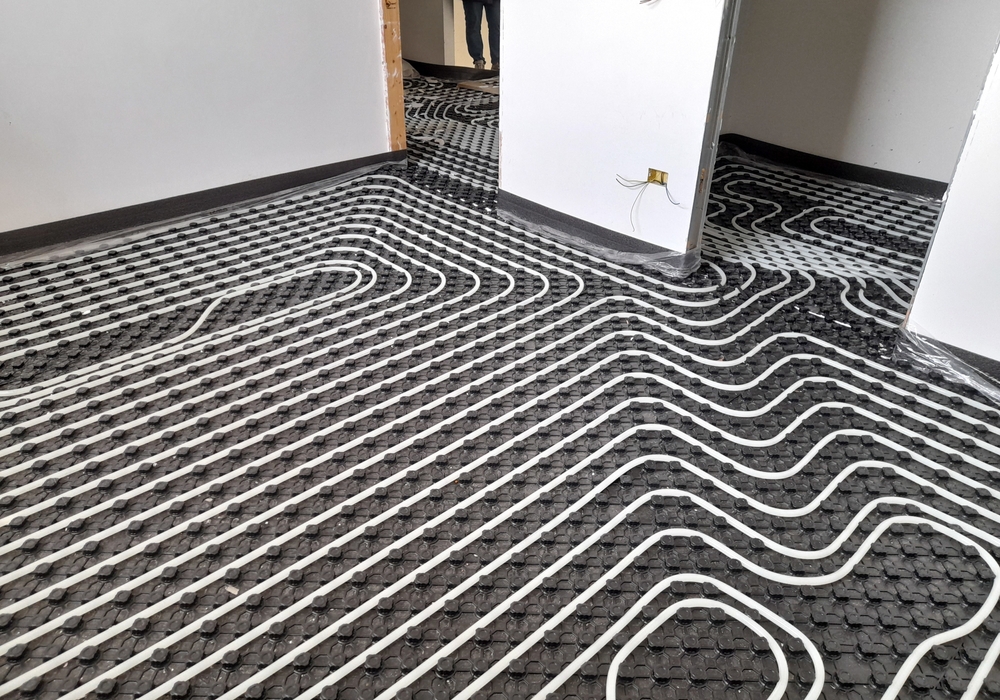
Underfloor heating water temperature is important as it determines how warm your floors will get, and subsequently how warm the rest of your home will get, since hot air rises.
Ideal Temperature Range for Different Floor Types
Depending on the type of floor you have in your home, there will be different temperatures that are more suitable for it. In some cases, you need to be very careful, while some floor options offer more wiggle room.
Below are the temperatures that different floor types can be heated to:
- Laminate, linoleum, and vinyl – maximum of 17°C surface temperature
- Stone and tile – up to 29°C surface temperature
Factors that affect underfloor heating water temperature:
- Type of floor
- Floor construction
- Heating requirement for the space
- Pipe diameter and pipe centres
- Insulation used
Remember that some floors are much better at retaining heat than others. For example, porcelain, ceramic, slate, and terracotta are fantastic for retaining heat, so these floors will remain warm for longer after the heating is switched off. On the other hand, engineered wood and solid hardwood are not good for retaining heat, and will promptly cool once settings are turned down or the system is turned off.
What Temperature Should Underfloor Heating Water Be Set At
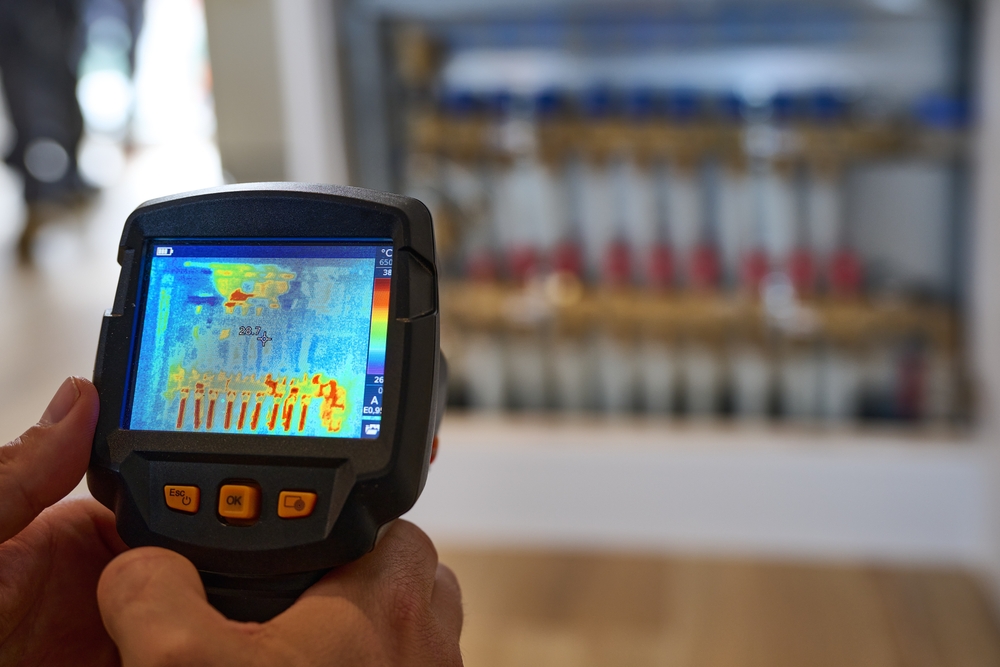
Underfloor heating water temperatures can vary, with the ideal floor temperature being anywhere between 23°C and 27°C for the most part. However, the ideal water temperature for underfloor heating is typically between 35°C and 55°C, depending on the type of flooring and insulation levels, ensuring both comfort and efficiency.
We recommend speaking to a professional to determine how much heat gets lost in your home so that you can calculate the right temperature for your circumstances. Every home is likely to be different, and understanding the structure of your house, its faults, and whether it is good at retaining heat, will help you with all heating aspects.
Depending on the floor size, system type, and other factors, underfloor heating can take anywhere from 40 minutes to three hours to properly heat up, so remember to have patience. It’s important to time your heating effectively, as we don’t recommend leaving it on all day due to running costs – but doing this will not negatively impact the system and is perfectly safe to do so.
Common Mistakes to Avoid with Underfloor Heating Settings
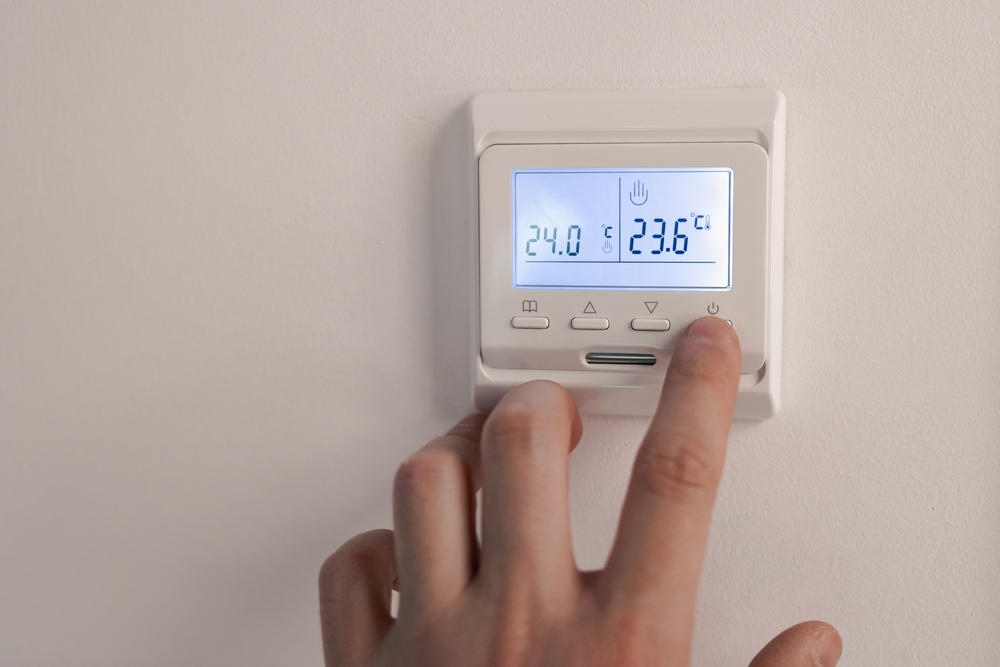
We will explore some common mistakes to avoid with your underfloor heating settings below, and why. Hopefully, you can quickly understand why these mistakes can be costly, and be mindful when you are setting up your system so that you can avoid them.
Not Using a Setback Feature
A setback temperature is the temperature that your underfloor heating will go back to when you don’t actively want your heating on. It effectively means that the floor temperature will never fall below this certain temperature, ensuring that you can comfortably move around your home.
Using this feature is great for saving money and making sure the home is comfortable, and it can help with overall heating efficiency. Just remember to get a thermostat installed in an appropriate location, and ensure that reliable temperature recordings can be collected so that the system knows when to work, and when not to.
Turning the Thermostat Up to Heat a Space Up Faster
A higher thermostat temperature will not make your room heat up faster. Please remember that thermostats are there to maintain temperatures, and adjusting the temperature won’t impact the power output. If you set your thermostat to 25°C, the heating will work at full power to reach this temperature, then maintain it by switching on whenever required.
When you turn your heating up, the system will only be on for longer to reach this temperature. The rate at which the space warms up, however, will not change.
Using Temperatures That Are Too High for Your Flooring
We already mentioned this, but not all floors are made equal, and not all of them can handle the same level of heat. Find out what type of floor you have in your home, and set your thermostat accordingly.
Please remember that when we are talking about floor temperature, we are talking about the surface temperature of the floor. This doesn’t mean that a floor with a maximum temperature of 17°C can only have the thermostat set to 17°C.
How to Adjust and Monitor Your Underfloor Heating System
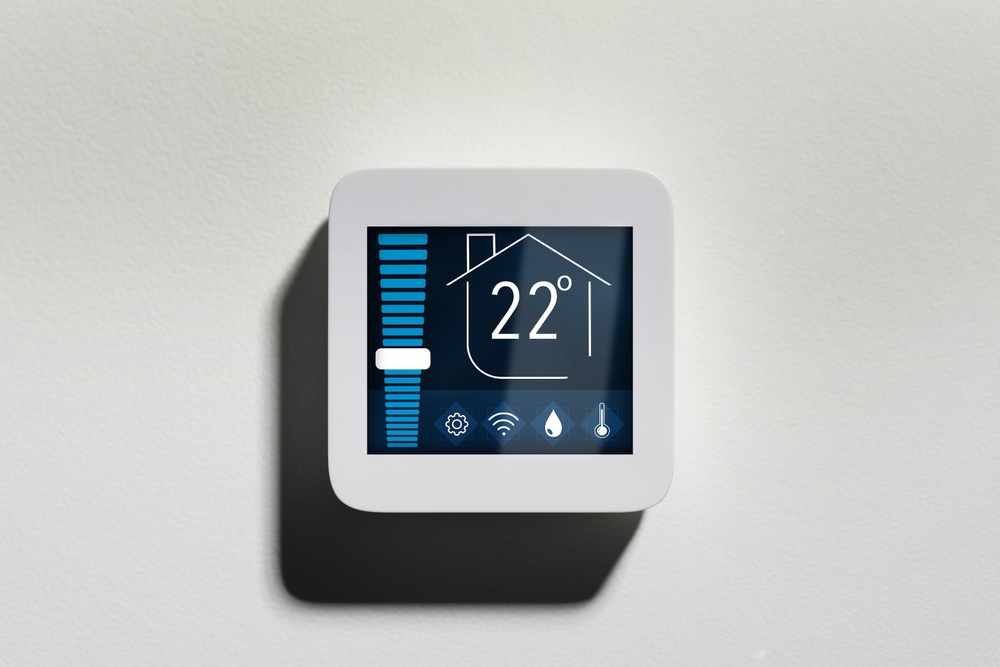
Adjusting and monitoring your underfloor heating system can be challenging, especially if you are new to it. Most households are used to the use of radiators, so finding the balance for this new system can take trial and error.
The best thing to do initially is set the thermostat in manual mode to use the floor sensor, then set it to 25°C and allow the floor to heat up – this may take some time, so have patience. After a few hours, return to the room and determine if you are comfortable in there or not. If you are, you can leave the temperature as-is, but if you aren’t, you will need to turn the system up or down, whichever works for you. You will need to repeat this until you find the perfect temperature.
Once you do this, you can switch the thermostat to use air and floor sensing to show you the room’s ambient temperature, and you know the perfect temperature by feel. At this point, you can set this chosen temperature as the desired option, and determine your heating schedule.
Balancing Comfort and Energy Efficiency
In order to balance comfort and energy efficiency, we recommend using floor and air sensing modes together and timing when the heating should come on. Pairing these two techniques together will ensure that you can stay efficient and keep energy wasting to a minimum.
If no one is home all day, there likely isn’t a reason to keep your heating on, unless you are using a setback temperature feature. You can time the system to come on an hour or so before you get home, depending on the floors and system you have, as well.
Expert Tips from NJT Plumbing and Heating Ltd
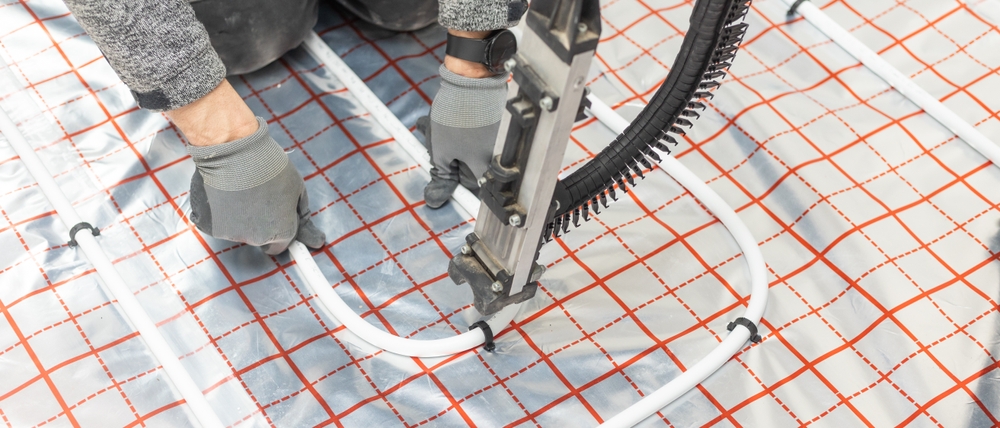
Below are some expert tips that we want you to know about so that you can have an easier time with your underfloor heating system. We understand that it can be tricky to learn, so hopefully these help.
Tips and tricks to remember to get the most out of your underfloor heating:
- Bleed your heating system pipes at least once a year
- Flush your system at least once a year
- Check your thermostat weekly to ensure everything is running smoothly
- Don’t forget to read instructions
- Take your time with the set-up and keep testing for the right temperature
- Use the setback feature at all times
- Research the maximum surface temperature of the floors in your house
Contact NJT Plumbing and Heating Ltd
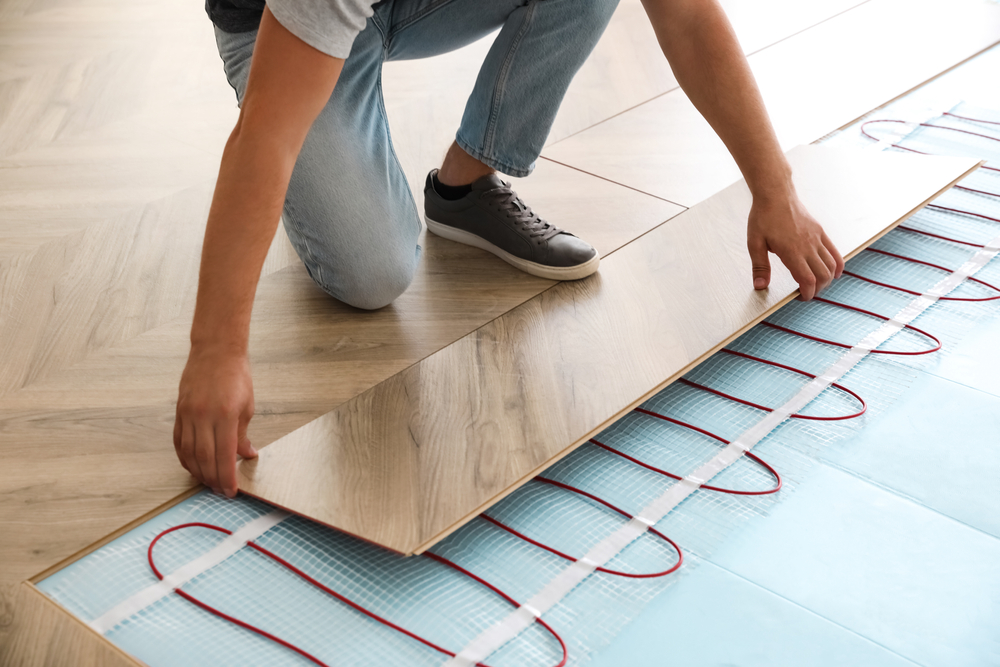
Underfloor heating water temperatures can take some getting used to, and there will probably be a lot of trial and error involved in finding the right temperature for you. However, when you know how to use these systems properly, they may turn out to be the best investment you could hope for in a property.
Ensure your underfloor heating system is running at the perfect temperature. Contact NJT Plumbing and Heating Ltd for expert installation, maintenance, and advice!
Please get in touch to find out more about us or to hear testimonials.
